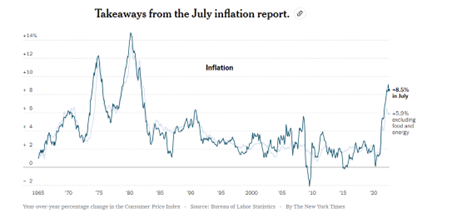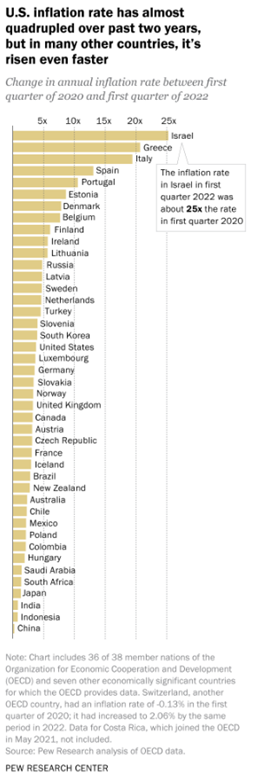Institutional Investor portfolios are under more scrutiny as volatility continues to climb.
Federico De Giorgis, President, Vidrio Financial
Recent market volatility fueled by geopolitical events like the war in Ukraine, rising inflation, supply chain disruptions, and the ongoing resurgence of COVID, have investors checking their portfolio allocations at an accelerated pace. Investors are craving more granular portfolio intelligence, which can then be used to reshape portfolios, make new decisions and minimize risk.
The CPI Impact
From a July inflation report, quoted in the NY Times, inflation numbers began to moderate a bit - finishing off at 8.5%, this was brought down from an easing at the gas pumps and airfare travel. However, even though this is down from the June 9.1% report, it’s believed that the overall decline is essentially a wash, as both food and rent costs increased.
(Click the chart for more details)
In terms of the global inflation outlook, many other countries around the world are facing higher rates of inflation due to ongoing supply chain issues, the Russian-Ukraine war, and poor economic policies. Turkey’s inflation rate recently rose to 79% with a monthly increase of almost 5%. Italy’s inflation rate hit 8.4% in July, a slight decrease month over month but still suffers from political instability, stagnation, and lack of structural reforms. The UK hit 9.4% driven mainly by energy costs and the continued war in Ukraine. The Bank of England sees inflation increasing over the next few months to ~13%.
(click the chart for more details)
Increased Portfolio Intelligence Demand
From a Vidrio Financial standpoint our clients are asking for an increased focus on allocations - making sure data inputs, investment portfolio monitoring, liquidity analysis, portfolio simulations, and more are up to date and processed as quickly as possible. In a recent Special Report from Pensions & Investments, Angela Miller-May, chief investment officer, Illinois Municipal Retirement Fund, cut the exposure to domestic equities earlier this year, in favor of a more international focus and global infrastructure approach. These types of early moves showcase how important real-time portfolio data can be to help create better decisions for the future. These types of movements should allow pension funds, foundations, endowments, and other institutional investors to be better positioned in the second half of the year.
Top of mind for investors is having certain knowledge sets at their fingertips. These are liquidity constraints, withdrawal notice periods, valuation, sector weightings, and even Sharpe ratios and VaR stats.
Here at Vidrio Financial, we have seen certain inquiries from clients as it relates to pockets of investments, particularly in the area of technology. Previously, some of the tech- heavy hedge funds have moved in line with the S&P in terms of overall investments. A recent Jefferies Equity Research report supports this movement as they saw several hedge funds push for growth across secular growth stocks and ditch technology. Funds are looking at this secular growth category as a traditional play that has proven successful in the past.
More recently, technology-heavy hedge funds have seen large drawdowns in their overall net asset values. Many can point to Tiger Global, and their recent struggles from entering 2022 being over-exposed to technology stocks and private allocations relative to industry peers. Before this year, Tiger’s exposure has provided several accolades, notably being recognized as one of the fastest growing hedge funds, with tens of billions in profits. This year, in light of the Russian invasion of Ukraine, inflation, and the Federal Reserve response, Tiger was pressured to open the gates on their funds, allowing investors to pull out more cash. This amounted to an increase in redemption limits to 33% vs. the 20%-25% redemption cap that had been in place in prior years.
Private Markets Conundrum
Further complicating investment strategies has been the extensively documented trend of institutional investors that have gone disproportionately long in their allocations to private equity relative to other asset classes. These allocations came from other areas of their portfolios particularly moving assets from their hedge funds to boost returns.
This trend was also well documented in our specially commissioned “Investor Compendium” report developed by Alternative Watch and Vidrio Financial. In total, the amount of new capital commitments to alternatives in 2021 exceeded that of 2020 by $30 billion, according to the report. According to Institutional Investor, the California Public Employees’ Retirement System committed the most capital to private markets among pension funds in 2021.
Transparency
As we addressed in our last blog on transparency, the underperformance across portfolios is also changing the narrative as it relates to the levels of transparency managers have historically provided to investors. Private equity shops are also having to come to terms with the impact public markets volatility is having on the overall value of their private market holdings.
This price sensitivity is starting to show up in the secondary market and has been rapidly forcing some PE managers to mark down some of their portfolios. In particular, some investors have reportedly been liquidating PE positions at discounts of 25% to the current book value. The value of PE secondaries reached $57 billion in the first half of 2022, breaking the previous first-half record hit a year ago as some allocators decided to sell their PE positions, according to an article recently published by Institutional Investor.
Against this backdrop, Vidrio Financial continues to proactively work with our clients to gain even more position-level transparency on a timelier basis from these managers. We believe in these volatile markets we are seeking to gain further access to more actionable data from managers to provide investors with higher levels of portfolio intelligence to help them better manage their portfolios and their associated risks.
Given the current state of the economy, now more than ever, information is power, even when inflation and interest rates can make many allocators uneasy about attaining their investment assumptions. Having greater levels of portfolio intelligence through greater levels of transparency is crucial to allocators repositioning for the future.









